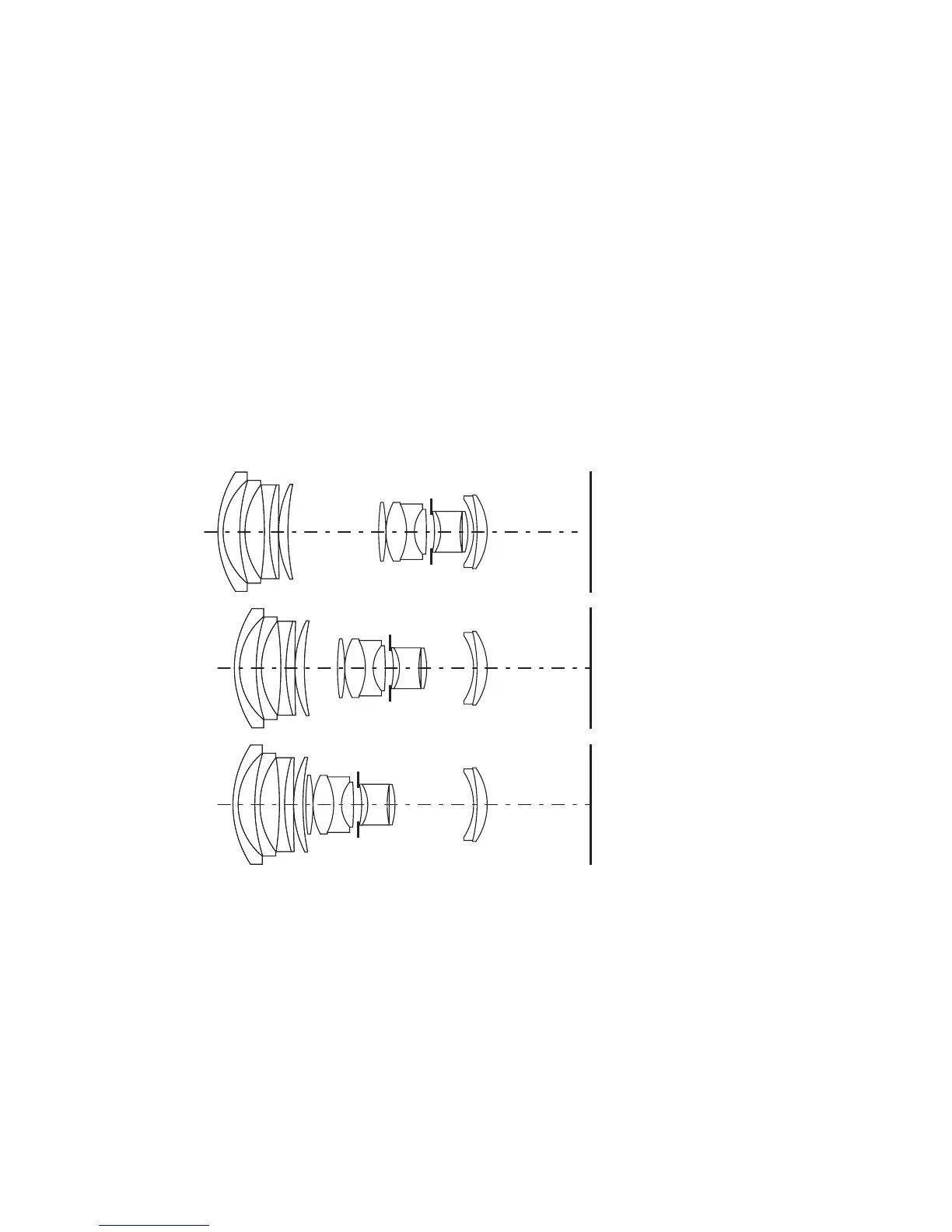234 THE HASSELBLAD MANUAL
theoretical as your personal preference may be part of this decision. For example, 110 mm,
not 80 mm, was always my standard lens for 2¼ square photography.
Lenses with longer focal lengths are classifi ed as long focal length lenses, telephotos, or
tele lenses and those with shorter focal lengths as wide angles.
Zoom Lenses
On zoom lenses, the focal length can be changed by moving some of the lens elements with
the zoom control. The ratio between the shortest and longest focal length is known as the
zoom range and is 2.2 for the 50–110 HC 3.5–4.5 lens in the H camera system. Zoom lenses
can reduce the number of lenses you need to carry and reduce or eliminate the need for
changing lenses and focusing each lens after the change. They are also helpful for making
minor adjustments in the area coverage while composing (Figure 14-1).
3.5–4.5/50–110 @ 50
3.5–4.5/50–110 @ 80
3.5–4.5/50–110 @ 110
Figure 14-1 Zoom lens design. The 14-element HC 3.5 4.5 50 mm–110 mm zoom lens with
front focusing in the 50 mm position (top), set at 80 mm (center), and set at 110 mm (bottom).
This zoom lens can be used with extension tubes. See Chapter 19 for detail.
The aperture of a zoom lens remains the same over the entire zoom range; however,
many zoom lenses have a somewhat smaller maximum aperture at the telephoto setting than
at the shorter focal length. This is the case with the HC 50–110 mm zoom for the H camera,
which explains why the aperture fi gure is f/3.5–4.5. The slightly smaller aperture of f/4.5 is at
the 110 mm setting. Reducing the aperture allows for a more compact lens with smaller front
lens elements.

